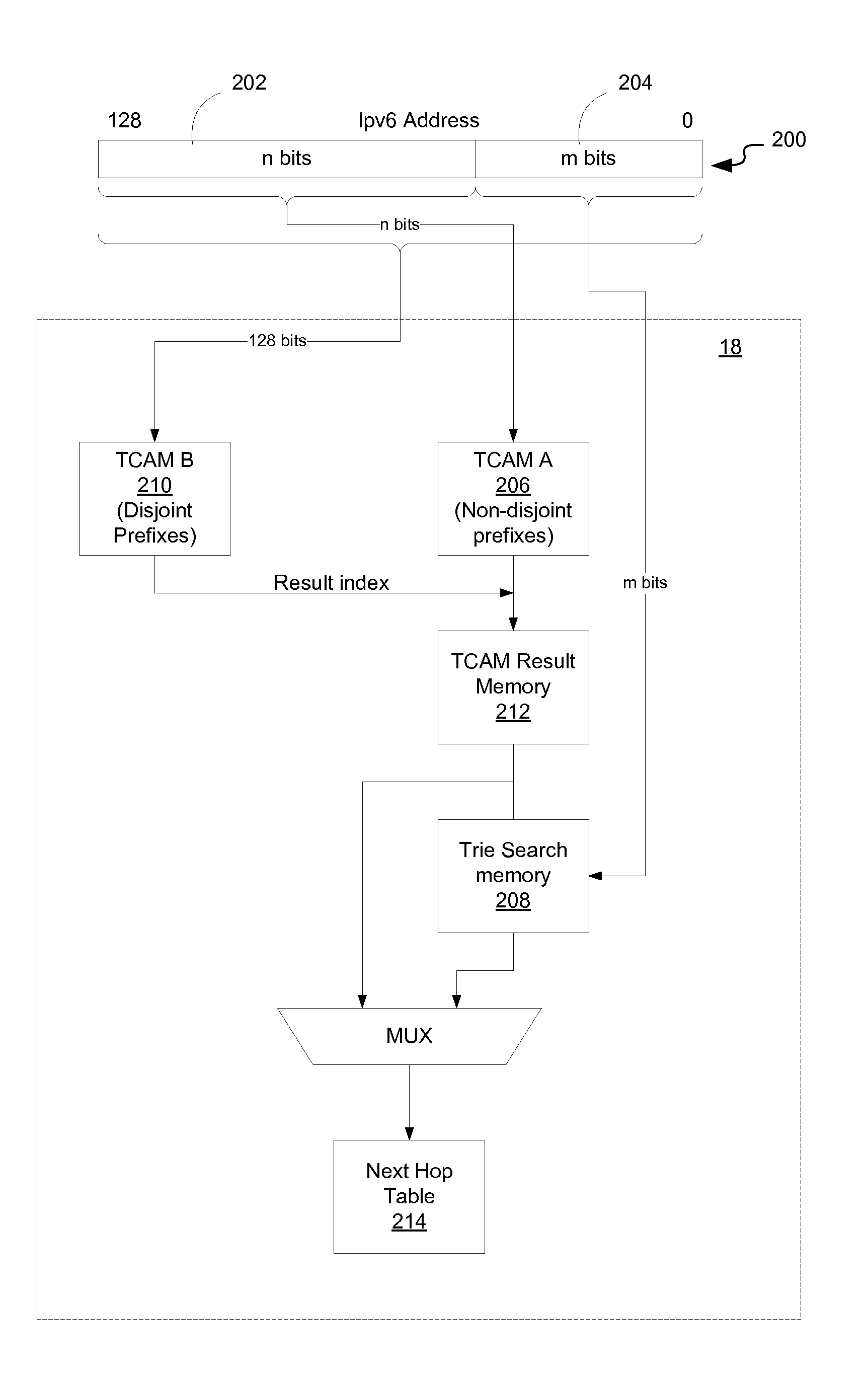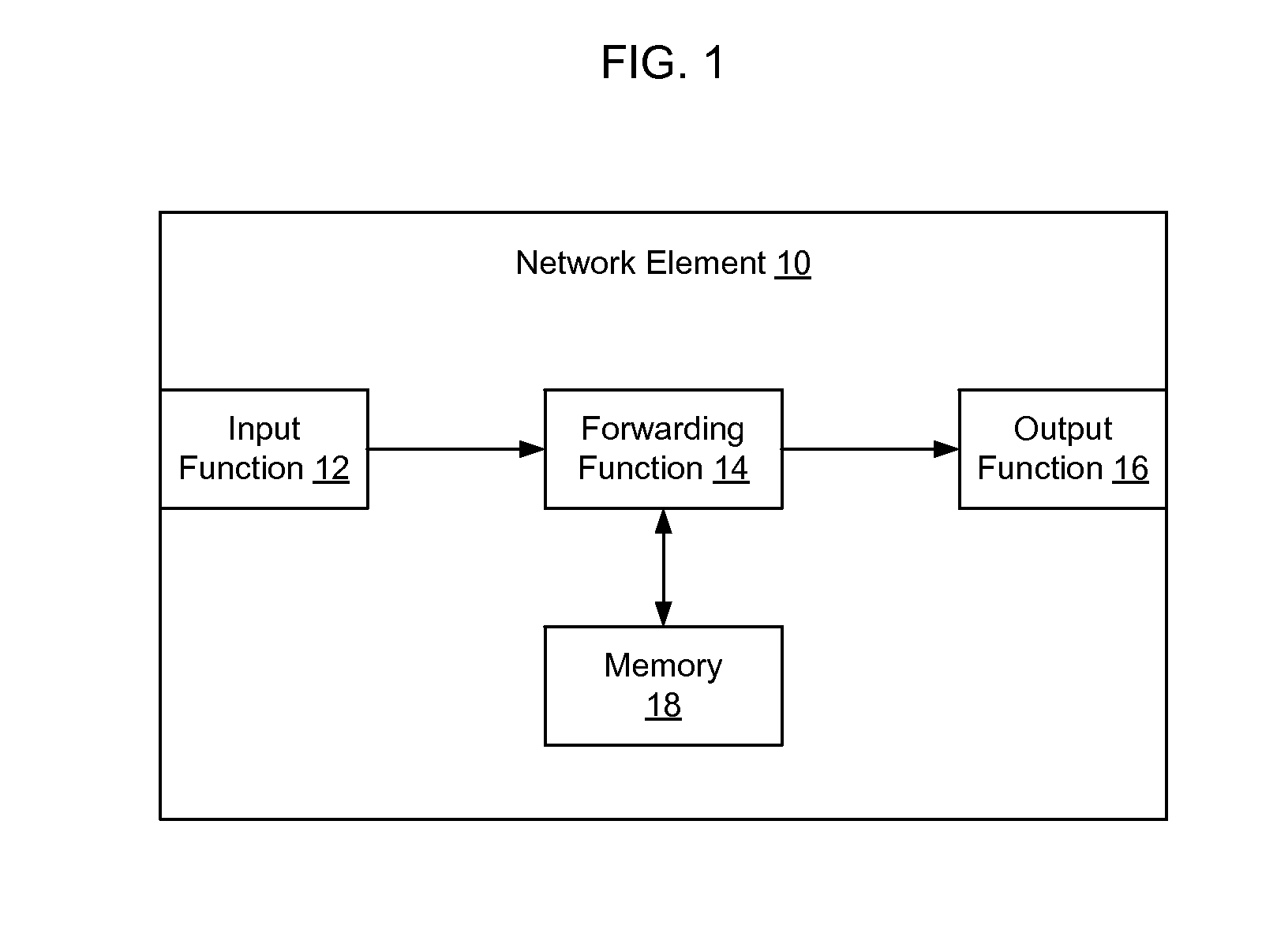Method for IPv6 longest prefix match
a prefix match and ipv6 technology, applied in the field of network elements, can solve the problems of consuming a lot of power of tcam, exhibiting poor scalability, and being more expensive than other memory technologies, and achieves the effects of facilitating the entry of new rules, reducing tcam churn, and fast lookup
- Summary
- Abstract
- Description
- Claims
- Application Information
AI Technical Summary
Benefits of technology
Problems solved by technology
Method used
Image
Examples
Embodiment Construction
[0019]The following detailed description sets forth numerous specific details to provide a thorough understanding of the invention. However, those skilled in the art will appreciate that the invention may be practiced without these specific details. In other instances, well-known methods, procedures, components, protocols, algorithms, and circuits have not been described in detail so as not to obscure the invention.
[0020]IPv6 uses 128 bit addresses. Although it is possible to have overlapping (non-disjoint) sets of forwarding rules, the extremely large nature of the address space makes it much more likely that forwarding rules will be sparsely populated and, thus, disjoint. To take advantage of this characteristic, according to an embodiment, an optimal combination of TCAM is used to implement fast lookup for IPv6 prefix matching, by splitting disjoint forwarding rules from non-disjoint forwarding rules. Specifically, non-disjoint forwarding rules and disjoint forwarding rules are s...
PUM
 Login to View More
Login to View More Abstract
Description
Claims
Application Information
 Login to View More
Login to View More - R&D
- Intellectual Property
- Life Sciences
- Materials
- Tech Scout
- Unparalleled Data Quality
- Higher Quality Content
- 60% Fewer Hallucinations
Browse by: Latest US Patents, China's latest patents, Technical Efficacy Thesaurus, Application Domain, Technology Topic, Popular Technical Reports.
© 2025 PatSnap. All rights reserved.Legal|Privacy policy|Modern Slavery Act Transparency Statement|Sitemap|About US| Contact US: help@patsnap.com



